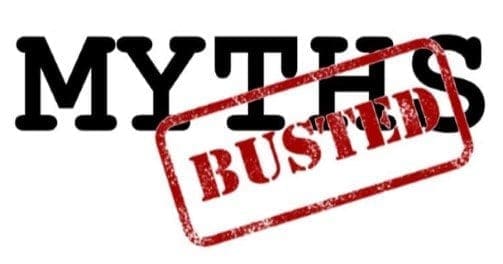Table of contents
It is a Myth that CI’s Role is to Improve Processes!
One of the worst ways a company can fail in their Continuous Improvement Efforts is to promote the Myth that “CI’s role is to Improve business Processes.”
I hope I got your attention with that statement...
First, let me define the word “Myth”: it is a widely held but false belief or idea.
It is a myth that CI’s role (the role of a Green Belt or a Black Belt) is to improve processes. Although this is what most CI departments are tasked with and believe. Let me explain further, before you decide that I am a “full of it”.
Here is a scenario of a Green Belt who is trained and tasked to be a “problem solver” engaged in a CI project. This how a business processes improvement project is haphazardly practiced in most organizations (you may have seen a similar situation in your organization):
Johnny, a CI engineer in an OpEx department of three people (in a company of 820), is tasked by leadership to “speed up” the order entry process. This mandate has come from corporate because we lost a customer and they think the order entry process could be the culprit.
He schedules meetings with a small group of SME’s (Subject Matter Experts) from the Order Entry process to analyze the process. They meet in a conference room (far away from where the problem happens) for an hour to discuss the process.
Johnny, after the meeting in his office, draws a flowchart from his notes of the meeting. His analysis (the notes and the flowchart) tells him that there are a lot of defects happening within the Order Entry process. These defects could be wasting the majority of the time.
He decides that a detailed Checklist could significantly reduce the defects and reduce the Order Entry process cycle time.
He works with some managers that oversee the “Order Entry” process to come up with a checklist.
Johnny emails the checklist to each of the Order Entry personnel with a note that says “The order entry process has been updated. Please fill out this checklist with each order and sign it to ensure that steps are omitted.”
How would you feel as an SME if this message and checklist were emailed to you? Did you notice how I used the word “could reduce…” in this scenario?

There is so much that went wrong in this scenario:
- Analyzing the process far from where the process actually happens
- Drawing a conclusion from a subjective process map of a complex process that was developed in one hour
- Developing an improvement from “could” and “might be” statements instead of data and facts
- The worst error in this scenario is that the Belt “solved” the problem instead of the SME’s
The SME’s in this scenario will most likely “round file” the improvement (meaning throw it in the trash). They will not buy into the solution because they were not a part of analyzing the process to come up with a solution.

It baffles me that some training organizations train Belts to be “the Sage on the Stage” (or the Problem Solver)
This is not a sustainable way to improve a business processes because you have broken the 1st rule of change management; “the process owner (SME) shall improve their own business processes.”
The Belt’s job is not to be the “Sage on the Stage” (the problem solver). Their job is to be the “Guide on the Side” (using tools to help the SME’s find the real solution). It is an amazing transformation when the SME’s see the “fix” to the process in the data (swim lane maps, VSM’s, Spaghetti Diagrams, Hypothesis Tests, etc.). When the SMEs are involved in identifying and implementing the fix then the SMEs will take ownership of the new process.
We teach our newly trained bels to be the mentor and facilitator of change. They are taught never to voice an improvement, rather let the data speak to the SME. Our belts know that the SME’s are the most important people in the room.
After reading the article, do you think I am “full of it?” Let us know what you think. Tell us about your experience.




















As a change manager, I heartily agree that the SMEs should be heavily involved in identifying and developing the fix so they have ownership. This also guides SMEs to become better problems solvers and leaders.
I’ve seen several black belts make this mistake. I’m not sure if it was because they were in a hurry, had poor role models themselves, or wanted to be the “sage on the stage” as you so aptly put it. But it did a lot of damage to the culture of the organization and the reputation of the belt program. Thanks for this article!